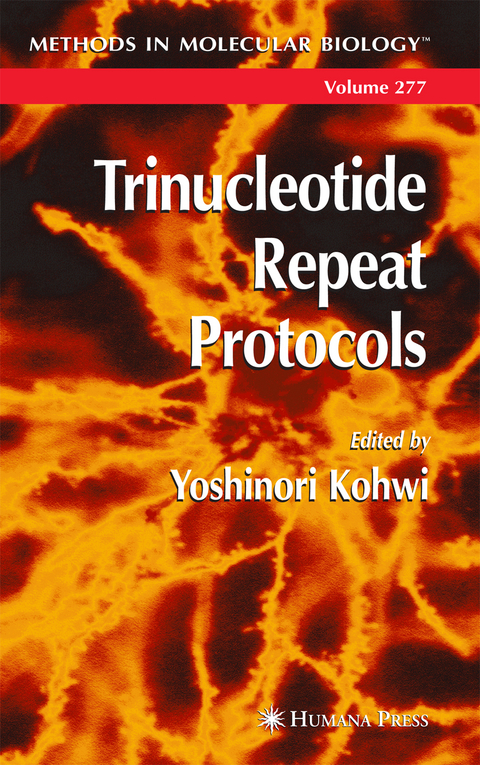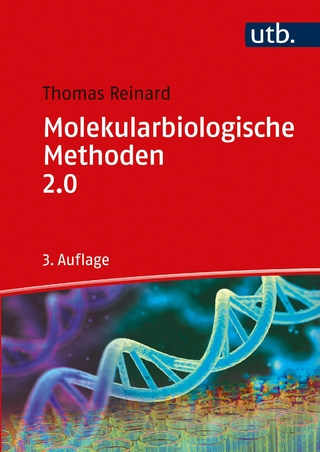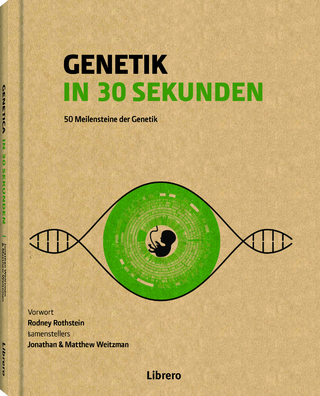
Trinucleotide Repeat Protocols
Humana Press Inc. (Verlag)
978-1-58829-243-8 (ISBN)
Mouse Models of Triplet Repeat Diseases.- Analysis of Triplet Pepeat DNAs and RNAs.- Analysis of Triplet Repeat Replication by Two-Dimensional Gel Electrophoresis.- Genetic Assays for Triplet Repeat Instability in Yeast.- Detection and Isolation of Trinucleotide Repeat Expansions Using the RED Method.- Analysis of Unstable Triplet Repeats Using Small-Pool Polymerase Chain Reaction.- Real-Time RT-PCR for CTG Repeat-Containing Genes.- Detection and Analysis of Polyglutamine-Containing Proteins and Their Aggregates.- Antibodies Against Huntingtin.- Using Antibodies to Analyze Polyglutamine Stretches.- Solubilization of Aggregates Formed by Expanded Polyglutamine Tract Expression in Cultured Cells.- Establishment of Animal and Cultured Cell Models for Trinucleotide Repeat Diseases.- Caenorhabditis elegans as a Model System for Triplet Repeat Diseases.- Monitoring Aggregate Formation in Organotypic Slice Cultures From Transgenic Mice.- The CGG Repeat and the FMR1 Gene.- Analysis of CTG Repeats Using DM1 Model Mice.- Lentiviral-Mediated Gene Transfer to Model Triplet Repeat Disorders.- Mouse Tissue Culture Models of Unstable Triplet Repeats.- In Vivo Analysis of Trinucleotide Repeat Diseases.- Neurotransmitter Receptor Analysis in Transgenic Mouse Models.- Chromatin Immunoprecipitation Technique for Study of Transcriptional Dysregulation in Intact Mouse Brain.- Techniques for Thick-Section Golgi Impregnation of Formalin-Fixed Brain Tissue.- Assessment of Impaired Proteasomal Function in a Cellular Model of Polyglutamine Diseases.- Assessment of In Vitro and In Vivo Mitochondrial Function in Friedreich’s Ataxia and Huntington’s Disease.- Triplet Repeats and DNA Repair.- Oxidative Damage in Huntington’s Disease.
| Erscheint lt. Verlag | 18.6.2004 |
|---|---|
| Reihe/Serie | Methods in Molecular Biology ; 277 |
| Zusatzinfo | XII, 342 p. |
| Verlagsort | Totowa, NJ |
| Sprache | englisch |
| Maße | 155 x 235 mm |
| Themenwelt | Naturwissenschaften ► Biologie ► Genetik / Molekularbiologie |
| Naturwissenschaften ► Biologie ► Mikrobiologie / Immunologie | |
| Naturwissenschaften ► Biologie ► Zellbiologie | |
| ISBN-10 | 1-58829-243-6 / 1588292436 |
| ISBN-13 | 978-1-58829-243-8 / 9781588292438 |
| Zustand | Neuware |
| Haben Sie eine Frage zum Produkt? |
aus dem Bereich


